Antinociceptive and anti-inflammatory effects of Crocus sativus L. stigma and petal extracts in mice
- PMID: 11914135
- PMCID: PMC101384
- DOI: 10.1186/1471-2210-2-7
Antinociceptive and anti-inflammatory effects of Crocus sativus L. stigma and petal extracts in mice
Abstract
Background: Crocus sativus L. (saffron) is used in folk medicine, for example as an antiedematogenic agent. We aimed to evaluate the antinociceptive and anti-inflammatory activity of saffron extracts in mice.
Results: We used aqueous and ethanolic maceration extracts of Crocus sativus L. stigma and petals. Antinociceptive activity was examined using the hot plate and writhing tests. The effect of extracts against acute inflammation was studied using xylene induced ear edema in mice. The activity of the extracts against chronic inflammation was assessed by formalin-induced edema in the rat paw. In the hot plate tests, intraperitoneal injection of both extracts showed no significant antinociceptive activity in mice. The extracts exhibited antinociceptive activity against acetic acid induced writhing. Naloxone partially blocked only the antinociceptive activity of the stigma aqueous extract. Only the stigma extracts showed weak to moderate effect against acute inflammation. In chronic inflammation, both aqueous and ethanolic stigma extracts, as well as ethanolic petal extract, exerted anti-inflammatory effects.
Conclusions: We conclude that aqueous and ethanolic extracts of saffron stigma and petal have an antinociceptive effect, as well as acute and/or chronic anti-inflammatory activity.
Figures
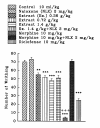
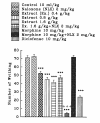
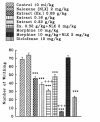
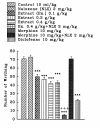

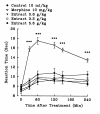

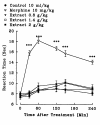
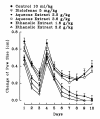
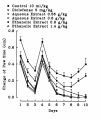
References
-
- Zargari A. Medicinal Plants. Tehran, University Press. 1990;4:574–578.
-
- Nair SC, Pannikar B, Panikkar KR. Antitumour activity of saffron (Crocus sativus). Cancer Lett. 1991;57:109–114. - PubMed
-
- Salomi MJ, Nair SC, Panikkar KR. Inhibitory effects of Nigella sativa and saffron (Crocus sativus) on chemical carcinogenesis in mice. Nutr Cancer. 1991;16:67–72. - PubMed
-
- Nair SC, Kurumboor SK, Hasegawa JH. Saffron chemoprevention in biology and medicine: a review. Cancer Biother. 1995;10:257–264. - PubMed
MeSH terms
Substances
LinkOut - more resources
Full Text Sources
Other Literature Sources
Medical

